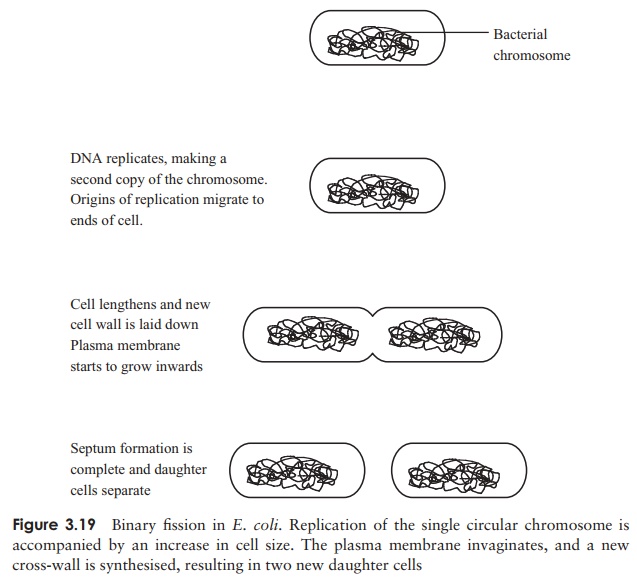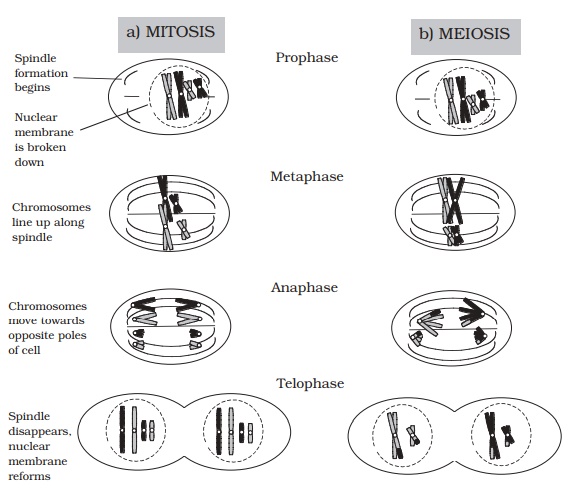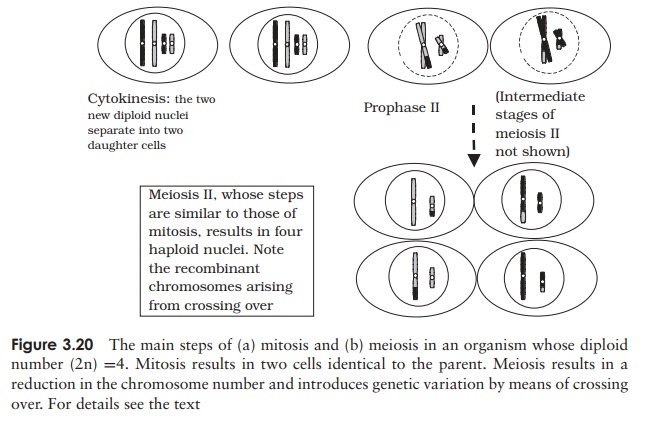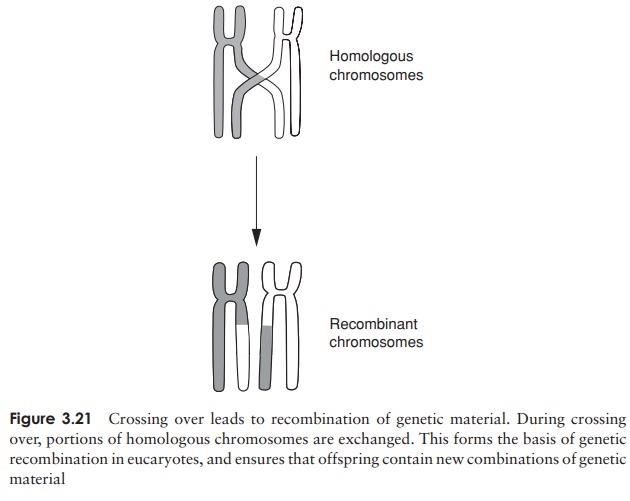Chapter: Essential Microbiology: Cell Structure and Organisation
Cell division in procaryotes and eucaryotes
Cell division
in procaryotes and eucaryotes
In, unicellular procaryotes, cell division by binary fission leads to the creation of
a new individual. Growth occurs in individual cells until a maximum size is
achieved and a cross-wall forms. Before cell division takes place, the genetic
material must replicate itself, and one copy pass to each new daughter cell
(Figure 3.19).

Cell division in eucaryotes also results in two
identical daughter cells. In the case of unicellular eucaryotes, this results
in two individual organisms (asexual reproduction), while in multicellular
forms there is an increase in overall size. Cell division is pre-ceded by a
process of nuclear division called mitosis,
which ensures that both daughter cells receive a full complement of
chromosomes. The principal phases of mitosis are summarised in Figure 3.20(a).
In interphase, the chromosomes are
not clearly visible under the microscope; DNA replication takes place during
this period. The duplicated chromosomes, held together as sister chromatids by the centromere, move
towards the centre of the cell during prophase.
A series of microtubules form a spindle between


the centrioles, and the chromosomes line up along
this during metaphase. Also, during
this phase the nuclear membrane breaks down, and each centromere duplicates.
One chromosome from each pair then migrates away from the centre to opposite
ends of the spindle. This stage is called anaphase.
Finally, in telophase, new nuclear
membranes surround the two sets of chromosomes, to form two nuclei. Mitosis is
followed by cell division. Overall, the process of mitosis results in two
identical nuclei containing the original (diploid) chromosome number.
At various stages of eucaryotic life cycles, a
process of meiosis may occur, which
halves the total number of chromosomes, so that each nucleus only contains one
copy of each. In sexual reproduction, the haploid gametes are formed in this
way, and the diploid condition is restored when two different gametes fuse. In
some eucaryotes, not just the gametes but a substantial part of the life cycle
may occur in the haploid form. Meiosis (Figure 3.20b) comprises two nuclear
divisions, the second of which is very similar to the process of mitosis just
described. In the first meiotic division, homologous chromosomes (i.e. the two
members of a pair) line up on the spindle together and eventually migrate to
opposite poles. While they are together, it

is possible for crossing
over to occur, a process by which the two chromosomes swap homologous
stretches of DNA (Figure 3.21). Since these may not be identical, crossing over
serves to introduce genetic variation into the daughter nuclei. In the second
meiotic division, sister chromatids separate as before, resulting in four
haploid nuclei.
Related Topics